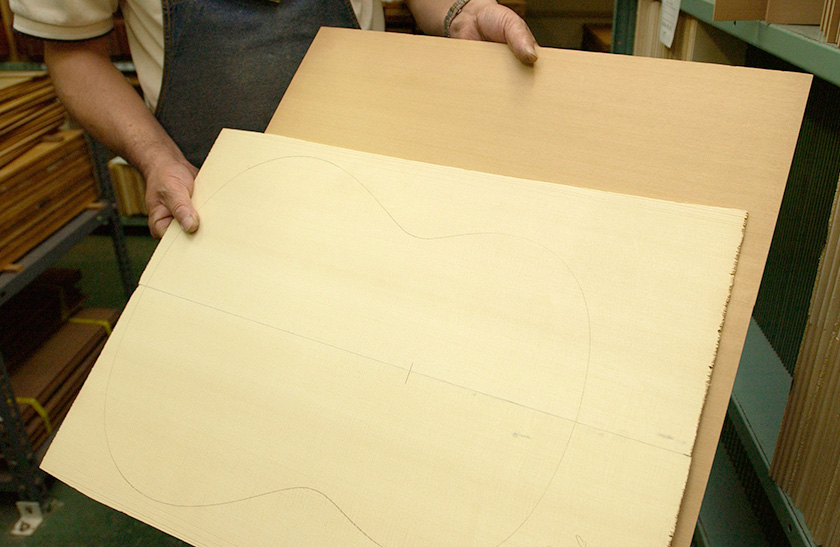How the Classical Guitar is Made
Guitar production begins with wood storage
Does the growth of trees affect the quality of wood?
Guitars are chiefly constructed of wood, most of which is sourced from outside Japan. Wood is easily affected by temperature and humidity, and extra care is needed in areas where the humidity is extremely high. It is important to ensure that wood is stored in a humidity-controlled location.

Wood should be stored in a dehumidifying room where humidity is constantly monitored.
The top plate of a classical guitar is constructed of spruce or western red cedar. Spruce has a generally white appearance, while western red cedar has a reddish tinge. Spruce wood tends to be sticky, and produces a clear, tight sound when used in a guitar.
Conversely, western red cedar is known to produce a soft tone and low, mellow notes.

A sheet of spruce in front, and western red cedar behind
The way the trees are grown is also an important factor for determining quality. Trees facing south and in constant sunlight have larger knots, and are not the best material for making musical instruments. Trees in an area that receives some sunlight in the morning and evening have fine growth rings and produce better quality materials.

